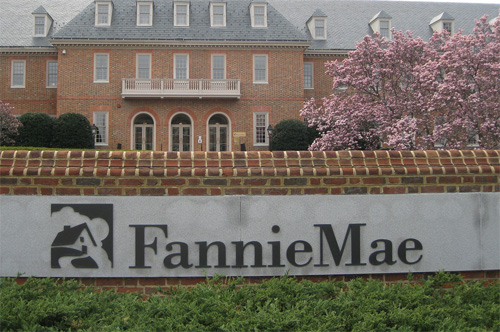SPECIAL REPORT: What Is the Multi-Housing Environment Without Fannie and Freddie?
After the SEC's charging of 45 Fannie and Freddie execs, what is the multi-housing world going to look like in the coming years?
The last few days haven’t been kind to six more former Fannie and Freddie executives, with the Securities and Exchange Commission bringing charges against those allegedly responsible for their roles in the financial crisis – bringing the total number of those so charged to 45. CPE’s executive editor Keat Foong took a look at what a world without Fannie and Freddie might look like.
December 19, 2011
By Keat Foong, Contributing Editor

What would a multi-family world without Fannie and Freddie look like? Speakers at a panel preceding the New York Housing Conference and National Housing Conference’s 38th Annual Awards Programs recently contemplated the possibilities and made the case for continued government involvement in multi-family financing. Panelists concluded that affordable housing may not obtain well priced financing, or any financing at all, if the government support for rental housing in the secondary markets disappeared altogether.
If they have not already done so, multi-housing players will definitely have to expect a future with a substantially changed financing system. Congress is not endorsing the survival of Fannie and Freddie, affirmed Ethan Handelman, NHC vice president. “That is off the table,” he said. All observers agree that the financing system undergird by Fannie Mae and Freddie Mac currently will “change significantly,” said Handelman. There is consensus, on the other hand, that FHA programs work well and should be kept.
Handelman said that while Congress may continue to criticize the two agencies in the next two years, however, no action will likely be taken until after the 2012 elections.
In his presentation on the history of the GSEs, Shekar Narasimhan, managing partner of Beekman Advisors Inc., reminded the audience that the reason the government developed GSE support for multi-family housing after it did so for single-family housing “had everything to do with” supplying affordable housing. Many renters are the ones that have no choice but to rent, he noted.
Because of stricter underwriting standards, the rate of defaults for multi-family housing financed by Fannie and Freddie are much lower than that for single family housing. Narasimhan noted that GSE multi-family investments are the best performing of all asset classes because of the way GSEs underwrite their multi-family loans.
Richard Froehlich, COO and general counsel of NYC Housing Development Corp., said that 90 percent of the agency’s long-term bonds issued for New York mixed-income housing are credit enhanced by Fannie or Freddie. “They play a very important role in mixed-income housing,” said Froehlich. Fannie and Freddie are also an important source of financing for the distressed portfolio that the agency tries to reposition, and for larger transactions of more than $25 million to $40 million.
Vincent R. Toye, managing director, GSE head of production for Wells Fargo Multifamily Capital, said his bank is seeing more five-year, floating-rate transactions as there are fewer banks willing to hold longer-term, 10-year, loans on their books. The disappearance of the GSEs will hit the rest of the country harder than New York City, he added.
The nation may also kiss goodbye to government mandates for affordable housing without the support of the government in the secondary markets. Richard Gerwitz, managing director, Citi Community Capital, noted that Fannie and Freddie financing enables the institution to sell its loans into the secondary market and thus help it make more CRA loans. The banks in New York City have a “tremendous amount” of need to satisfy CRA requirements. “We are all running like chipmunks after affordable housing.”
The point was raised that that commercial real estate is functioning without the benefit of either Fannie or Freddie. That sector is served by banks, insurance companies and CMBS conduits. But life insurance loans for example are provided at higher cost and lower leverage.
Bond securities investors would also demand higher returns if the loans are not backed by Fannie or Freddie. Toye asserted that institutional investors and banks may be willing to buy 10-year paper, “but not at the rates at which they buy them today” with Fannie and Freddie in the market. If they can be priced, banks may be willing to hold longer term 10-year, 15-year paper, “but you may not like the price I have.”
In response to a question from the audience, Narasimhan said that mortgage-backed securities guarantees cannot be provided purely by the private sector for two reasons. A government “wrap” is needed, he said, for affordable housing, and in times of crisis as a counter-cyclical play. If a government guarantee is needed for the mortgage backed securities, that entails complex legislation and regulations, as is the case today.
Ultimately, in the case of multi-family financing, there is no question government involvement is needed in the secondary market to keep financing costs low for rental housing and allow the nation to meet affordable rental housing objectives.







You must be logged in to post a comment.